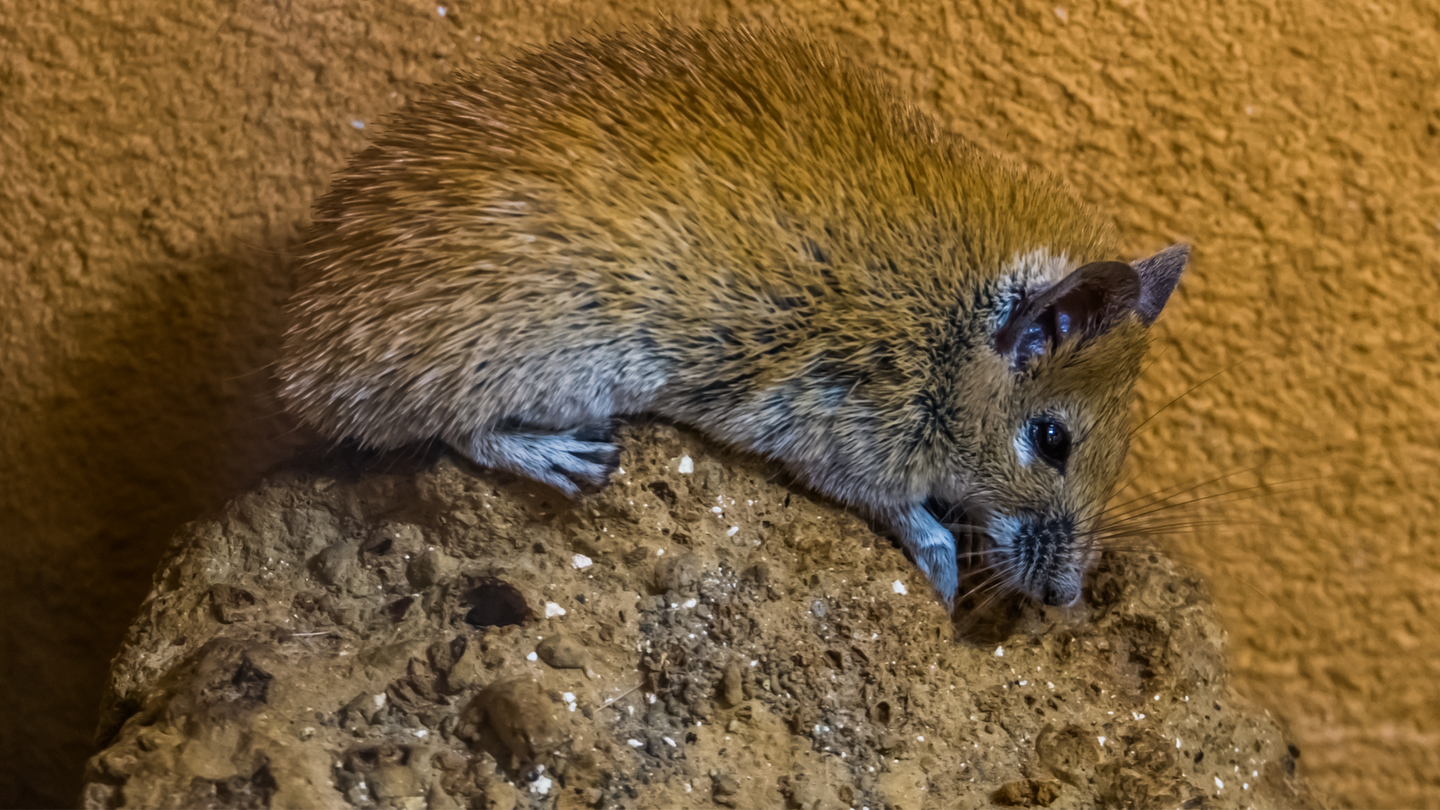African spiny mouse joins a small but mighty group of bony plated mammals
The small to medium sized produce spiny structures under their skin of their tails—and can even regrow them.

The armadillo is beloved for its ability to scrunch itself up in a ball with their protective flexible shells. They’ve long been considered the only living mammals with these reptilian and fish-like suits of bony or scaly armor instead of hairy mammalian skin. However, a study published May 24 in the journal iScience, shows that African spiny mice actually produce the same spiny structures beneath the skin of their tails, which has gone largely undetected by scientists.
[Related: How science came to rely on the humble lab rat.]
African spiny mice are small to medium sized rodents with spiny hairs on their upper body, large eyes and ears, and scaly tails. Some species are found in Egypt, other parts of eastern Africa, Saudi Arabia, and Pakistan and while others are native to South Africa.
A team of scientists made this spiny discovery while conducting routine CT scanning of museum specimens for the openVertebrate program.
“I was scanning a mouse specimen from the Yale Peabody Museum, and the tails looked abnormally dark,” co-author and director of Florida Museum of Natural History’s digital imaging laboratory Edward Stanley said in a statement.
Stanley initially assumed the discoloration was caused by an imperfection that was introduced when the specimen was preserved, but analysis of the X-Rays revealed an unmistakable feature that he was intimately familiar with.
“My entire PhD was focused on osteoderm development in lizards,” he said. “Once the specimen scans had been processed, the tail was very clearly covered in osteoderms.”
Osteoderms are the bony deposits that form scales or plates on the skin. They are also distinct from the scales of pangolins or the quills of hedgehogs and porcupines. These parts are composed of keratin, the same tissue that makes up hair, skin, and nails.

Osteoderms on spiny mice have been observed since the mid-1970s. A 2012 study demonstrated spiny mice can regenerate injured tissue without scarring. This ability is very common among reptiles and invertebrates, but was previously unknown in mammals. While mammalian skin is particularly fragile, spiny mice can heal twice as fast as their rodent relatives.
Spiny mice belong to four genera in the subfamily Deomyinae, but other than similarities in their DNA and possibly the shape of their teeth, scientists have been unable to find a single shared feature among the species of this group that distinguishes them from other rodents.
[Related: This newly discovered gecko can literally squirm right out of its skin.]
The team scanned additional museum specimens from all four genera and found that the spiny mice tails were covered in the same sheather of bone. Gerbils are the closest relatives of Deomyinae and they do not have osteoderms, which means that this trait likely evolved only once in the ancestor of spiny mice.
“Spiny mice can regenerate skin, muscle, nerves, spinal cord and perhaps even cardiac tissue, so we maintain a colony of these rare creatures for research,” co-author and University of Florida biologist Malcolm Maden said in a statement.
Maden and his team are mapping the genetic pathways that give spiny mice these healing powers to hopefully find a model for human tissue regeneration. The team further analyzed the development of spiny mice osteoderms and confirmed that they were similar to those of armadillos, but likely evolved independently.
